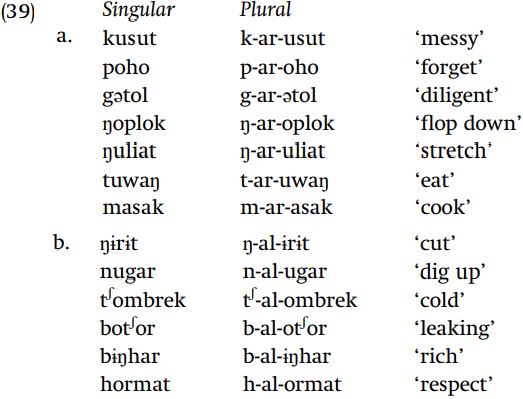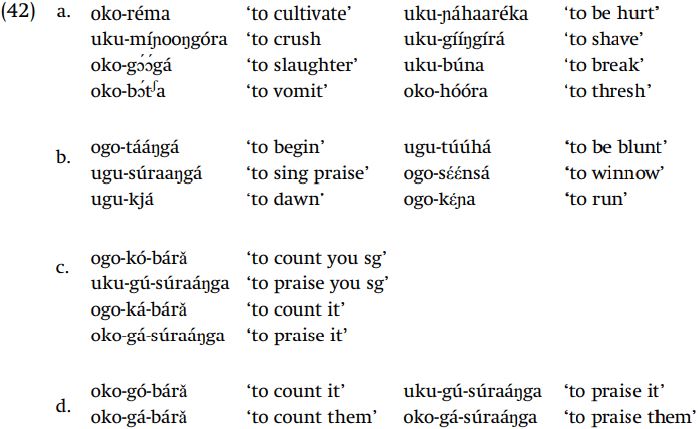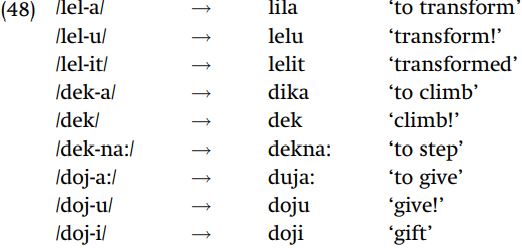
Dissimilation
 المؤلف:
David Odden
المؤلف:
David Odden
 المصدر:
Introducing Phonology
المصدر:
Introducing Phonology
 الجزء والصفحة:
220-7
الجزء والصفحة:
220-7
 7-4-2022
7-4-2022
 3406
3406
Dissimilation
Less common in the languages of the world are processes of dissimilation, whereby one of two similar consonants changes to become less like the other. An example of such a process is lateral dissimilation, as found in Sundanese. In this language, the plural is formed by infixing -ar- after the initial consonant, as seen in (39a). When another r follows within the stem, the r of the infix dissimilates to l.

A similar process affects the adjectival suffix -a:lis in Latin, where /l/ dissimilates to [r] if the preceding stem contains another /l/.

Dissimilation of aspiration is attested in other languages such as Manipuri. In (41), the first consonant of the directional suffixes -th ok and -khət deaspirates if preceded by another aspirate or h (and if the immediately preceding segment is a vowel or sonorant, the consonant becomes voiced).

Many Bantu languages such as Kuria have a voicing dissimilation process whereby k becomes g when the following syllable has a voiceless consonant (excluding h). This results in alternations in the form of the infinitive prefix which is underlyingly /oko/, as well as the second-singular object prefix /ko/ and the (diminutive) object prefix /ka/. The data in (42a) motivate the underlying prefix /oko/ and (42b) shows application of dissimilation to the prefix. (42c) shows the object prefixes /ko/ and /ka/ which also dissimilate, and (42d) shows the contrasting prefixes /go/ and /ga/ which have underlyingly voiced consonants, and do not assimilate.

The language Chukchi has a number of dissimilatory processes. One of these dissimilates nasality, by changing ŋ to γ before a nasal.

A second dissimilation in the language changes the first in a sequence of identical fricatives to a stop.

An important feature of this rule is that only homorganic clusters dissimilate. Other combinations, such as, yγ, wɬ, or ɬγ, remain unchanged.

Finally the glide j dissimilates to γ before a coronal consonant.

Dissimilation between vowels is also found in languages. One case comes from Woleiaian, where the low back vowel /a/ becomes [e] before the low back vowels /a/ and /ɒ/. This process affects the causative prefix /ga/, seen below.

In Wintu, the vowels /e, o/ become [i, u] before /a/ by a similar kind of dissimilation.

Examples of low vowel dissimilating to nonlow vowels before low vowels are also found in Kera and Southern Russian. Interestingly most examples of dissimilation between vowels are precisely of this nature: we do not seem to find cases of high vowels dissimilating to nonhigh near other high vowels.
 الاكثر قراءة في Phonology
الاكثر قراءة في Phonology
 اخر الاخبار
اخر الاخبار
اخبار العتبة العباسية المقدسة


